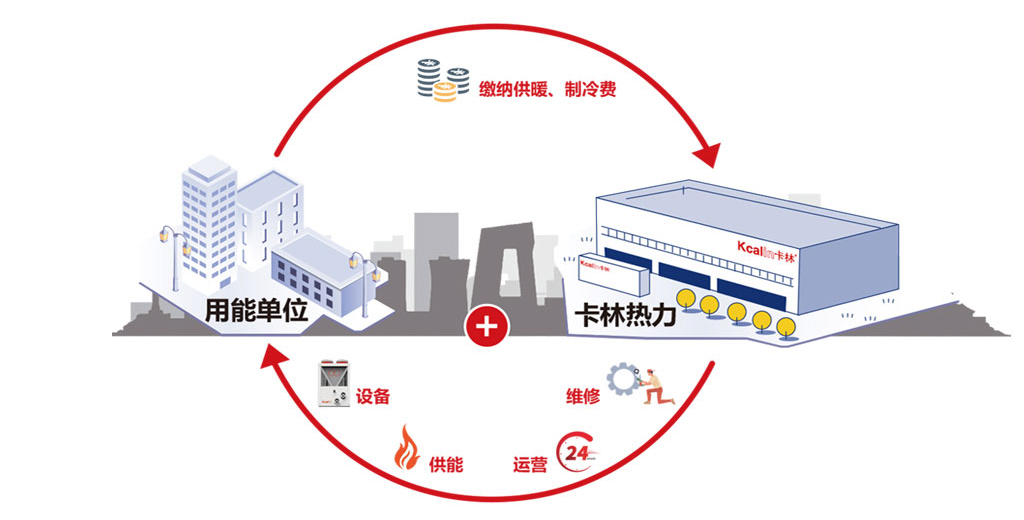In the cold winter, the stability and efficiency of the heating system directly affect the quality of life of residents. At present, municipal heating and distributed heating are the two main heating methods.
Municipal heating, also known as centralized heating, refers to the use of a pipeline network to deliver heat to multiple users (such as residential and office buildings) through one or more large centralized heating stations (such as thermal power plants or regional boiler rooms). The heat source is usually coal, gas, oil, or renewable energy. After being heated at the heat source, the heat medium (such as hot water or steam) is transported to various users through the heating pipeline network, and then the heat is released through the radiator, and returned to the heat source through the return water pipeline network, forming a circulating system.
Advantages:

Efficient utilization of energy: Central heating systems typically use large-scale cogeneration equipment, which can simultaneously generate electricity and heat, improving energy utilization efficiency.
Obvious environmental benefits: Central heating stations are often equipped with pollution control equipment, which helps reduce pollutant emissions and meets environmental requirements.
High heating stability: The maintenance of the heat source equipment and pipeline network system in the centralized heating system is relatively professional, and the heating reliability and stability are high.
Low operating costs: Due to the economies of scale of centralized heating systems, the production and transportation costs per unit of heat are relatively low, and long-term operating costs are more economical.
Disadvantages:
High initial investment: The construction of centralized heating systems requires a large amount of infrastructure investment, including heat source equipment, pipeline network systems, etc., and the initial investment is relatively high.
Heat loss in pipeline network: During long-distance transportation of heat, the heat loss in the pipeline network is relatively large, especially in old pipelines where the loss is more severe.
Poor adjustment flexibility: When the user's heat demand changes significantly, the central heating system has poor adjustment flexibility, which may lead to insufficient heating or overheating.
Complex maintenance and management: The centralized heating system involves a large number of pipelines and equipment, and maintenance and management are relatively complex, requiring high professional skills and personnel configuration.
The working principle and advantages and disadvantages of distributed heating
Disadvantages:
High operating costs: Distributed heating systems have a small scale and are difficult to achieve economies of scale, resulting in high production and operating costs per unit of heat.
Environmental pressure is high: Distributed heating systems are scattered and lack unified pollution control measures, which can easily lead to local environmental pollution problems.
Short lifespan of heat source equipment: Distributed heating equipment often has a short lifespan and requires frequent replacement and maintenance, increasing long-term operating costs.
Restricted heating stability: Distributed heating systems are limited by the stability of small heat source equipment, and their heating reliability may not be as good as centralized heating systems.
From the above analysis, it can be seen that municipal heating and distributed heating have their own advantages and disadvantages, and are suitable for different application scenarios. Municipal heating is suitable for large-scale urban heating needs, with the advantages of efficiency, stability, and environmental protection, but it has high initial investment and poor regulation flexibility. Distributed heating is suitable for small-scale and personalized heating needs, with the advantages of low initial investment, flexible regulation, and low heat loss. However, it has high operating costs, high environmental pressure, and short equipment life.
In practical applications, the choice of heating method depends on the specific situation. For cities that have already improved their municipal heating systems, they can continue to optimize and upgrade their systems to improve heating efficiency and reduce heat losses. For newly developed communities or urban fringe areas, distributed heating systems can be considered to achieve flexible and economical heating. Meanwhile, the hybrid heating mode is also a solution worth exploring, which can combine the advantages of the two heating methods to meet diverse heating needs.
In the future, with the continuous advancement of technology and the improvement of environmental protection requirements, heating methods will become more diverse and intelligent. Both municipal heating and distributed heating require continuous innovation and improvement to achieve more efficient and environmentally friendly heating goals, providing residents with a more comfortable living environment.







Comment